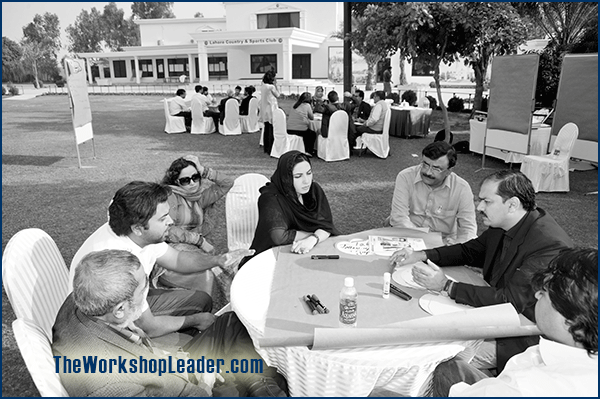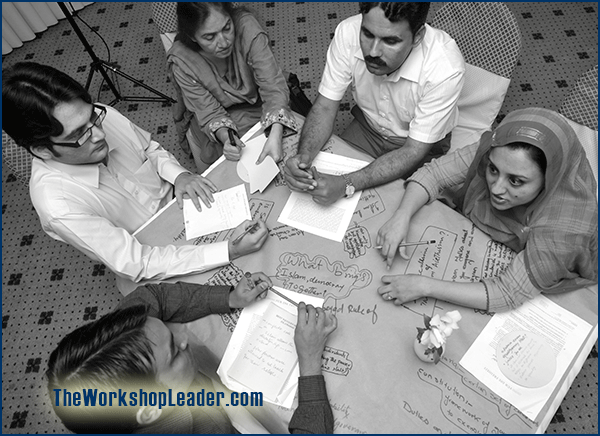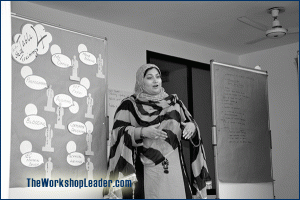Having a good discussion is like having riches.
Kenyan Proverb
The World Café is a group facilitation technique for 12–60 people. It has few core topics under a common theme and enables vivid discussions and excellent results.
History
In 1995, several business and academic leaders met at the house of Juanita Brown and David Isaacs in California. For their discussion they split up into in several smaller tables and recorded their ideas on a large paper tablecloth. They switched tables and told the others what they had discussed. Thus, the World Café evolved — a powerful moderation technique for inspiring group discussions. After their discussions the guests of Juanita and David asked themselves, ‘What had happened?’
Key Elements of World Café
They analysed what made these discussions a success and came up with seven key elements:
- Set the context: why do you meet, what’s the topic and who should be part of it?
- Create a hospitable space: participants must feel relaxed — the environment determines that [see Events/Logistics].
- Explore questions that matter.
- Encourage everyone’s contribution: wisdom of the community is generated with the contribution of every member present.
- Connect diverse perspectives: you do not only connect people but also link discoveries — these are the new findings.
- Listen together for patterns and insights: we sense a connection to the larger whole.
- Share collective discoveries: save the results by taking digital photos for later distribution and follow-up.
The method itself is very participatory and interactive. It reduces fear and lowers barriers, which should give everyone the chance to speak — including the more timid among us. But do not expect the group to develop an action plan out of it.
As moderator, you divide your workshop participants into groups of four to eight people. Appoint one host for each coffee table. You’ll have as many tables as groups. Place a large piece of paper as a tablecloth on each table. Place markers on each table and tell participants to write their results directly on the tablecloth. Before starting you should make everybody familiar with the table rotation plan — otherwise you’ll have a lot of confusion about who should go where.
Rounds
Round 1: Each group discusses at their initial table a given topic (different at each table) for about 20 mins. The table-host makes sure that everybody contributes and that the participants write the results of their discussion on the table.
Round 2: The group rotates to their next table, leaving the table host behind. Usually, the table-host will have been identified by you as the moderator — alternatively, the group can decide on the spot who should stay at the table. Each host briefs the newly-arriving group about what has been discussed previously. The group takes the table’s topic and its discussion from there and develops it further.
Round 3: next rotation according to round 2. If you have more tables/groups, more rounds are required.
Harvest: all table hosts present, with the help of the table cloth, the results of their table.
The website www.theworldcafe.com is a publication of the World Café Community Foundation. It has resources, tips and tools and even a whole community to engage with.





